|
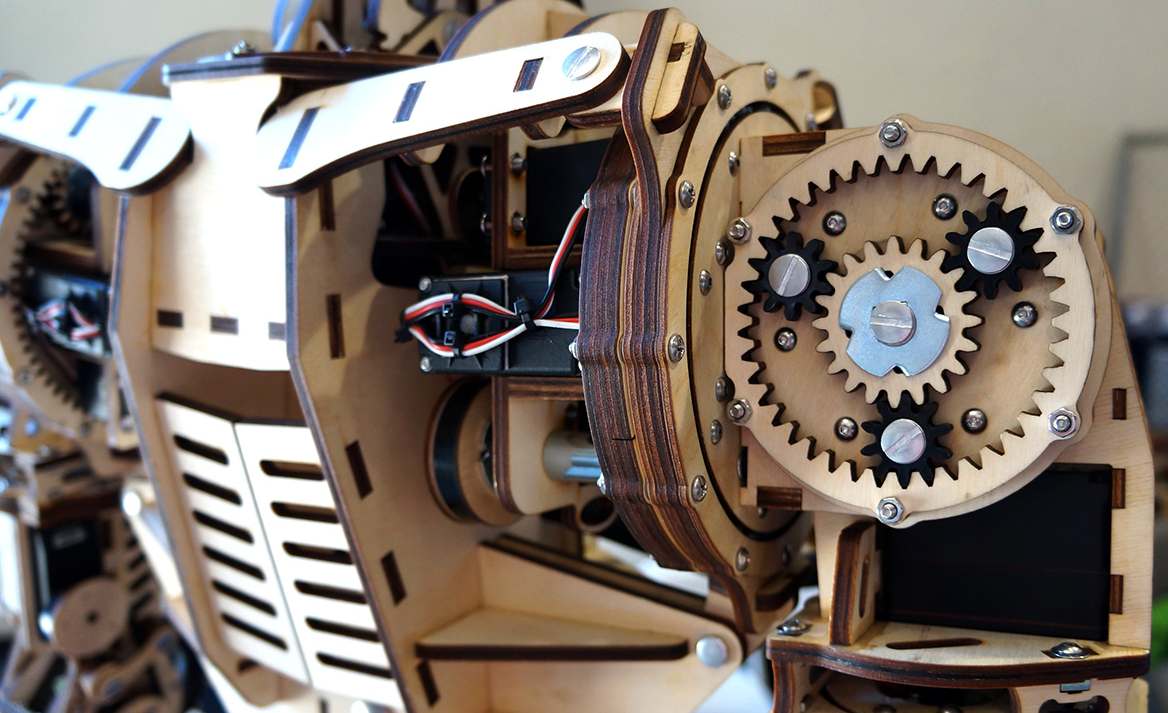
ROY
- Brian Roe spent nearly a decade building animatronic monsters for films such as Virus, A.I., and Scooby Doo 2. Then, almost overnight, Hollywood abandoned mechanical characters for computer renderings. Roe now works as a technology consultant, but with the surge of cheap, user-friendly microelectronics, he saw a market emerging for hobbyist robots. "It used to be that electronics and software were out of reach," Roe says. "Over the past six or eight years, it has completely switched." So Roe began developing a low-cost kit to teach anyone robotics. He calls his work-in-progress Roy the Robot.
For now, Roy is a head, neck, and pair of lower arms. Yet, with about 1,200 parts controlled by animatronics software, the robot already looks and moves like a human. Roe laser-cut the robot's frame from pliable, lightweight wood to retain complex architecture while keeping costs low. Twenty-eight inexpensive servomotors help Roy gesture with his hands; move his wrist, neck, and jaw; and even blink his eyes.
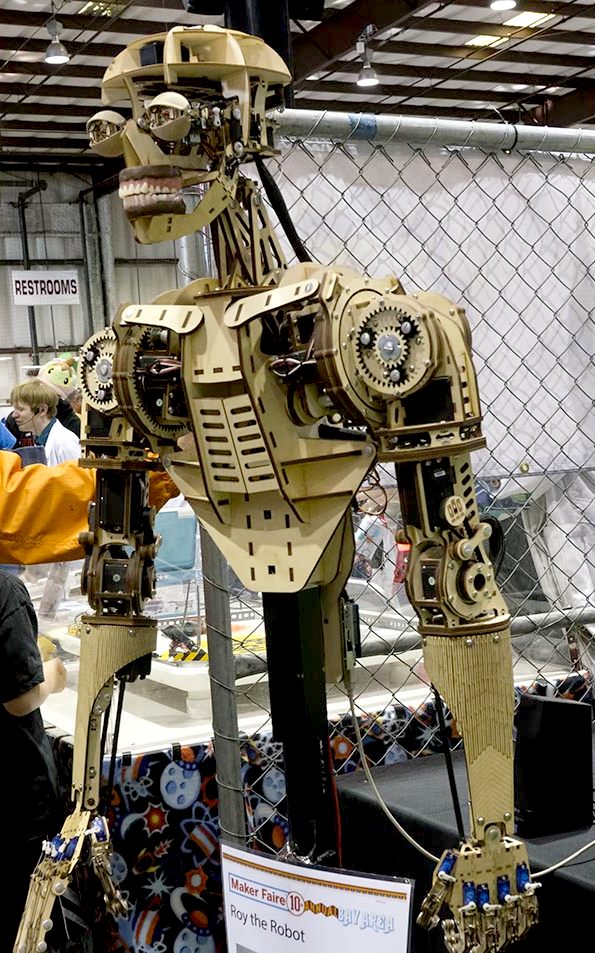
To complete Roy's upper arms and shoulders, Roe launched a successful crowdfunding campaign and sent backers DIY kits based on the hands and arms. He eventually hopes to sell the kits for about $300. That would fill a need for inexpensive manipulators. "The cheapest capable robotic arms are in the $20,000 range," says Siddhartha Srinivasa, a roboticist at Carnegie Mellon University.
Roe estimates that a full robot kit with a torso and legs might cost $3,000, and he hopes to one day imbue Roy with enough artificial intelligence to learn human motion. "But my main goal is to help people build, program, and understand robotics," Roe says. "Because, in the end, we're going to live in a robotic society."
Humans
cannot perform anywhere near as well as other animals that have adapted
specifically for an ecological niche, but humans are very versatile, where
specific adaptation often means that some animals cannot function at all
in a different environment. For example, a human can swim in water,
whereas a fish
cannot walk on land. A human can swing from branch to branch in a tree, an
antelope
cannot. Then humans can use their skills to make machines that fly - and
that is the really big difference. Humans use their thinking ability to
overcome physical limitations.
Robots that
look and operate like us could perform many useful functions in a modern
society. One thing is for sure, society is due for a major shakeup in the
next 20 years as this technology develops.
Crack
this one and we've got it made. Imagine, no need to do the washing up, or
go to work - you can send your mechanical replacement in to take your
place. Robots, or rather, automation is likely to eventually displace jobs
for humans. What then? Who knows. Politicians are a pretty dumb bunch when
it comes to technology and planning for the future - hence our affordable
housing shortage. It's bound to be one heck of a cluster f--- with a
capital F. All most politicians want to do is tax us to be able to empire build and wage wars.
But how can they tax us when we will have robots doing our jobs for us. Or
otherwise, how will they compensate us when a job is no longer necessary. Society is due for a
major shakedown. How long before that particular meltdown happens is
anybody's guess. Look how long it took for world leaders to recognize global
warming.
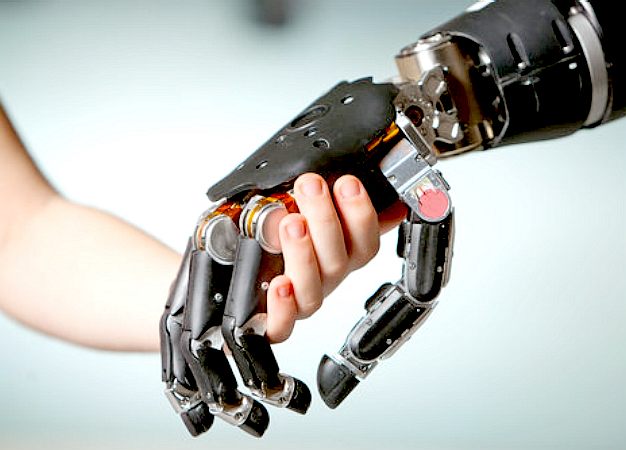
THE
GUARDIAN 26 DECEMBER 2015 - JOBS FOR ROBOTS = A MORE CREATIVE & FAIRER
SOCIETY
It was first proposed by Thomas Paine in his 1797 pamphlet, Agrarian Justice, as a system in which at the “age of majority” everyone would receive an equal capital grant, a “basic income” handed over by the state to each and all, no questions asked, to do with what they wanted.
Dutch municipalities are, in the words of de Boer, taking a “small step” towards a basic income for all by allowing small groups of benefit claimants to be paid £660 a month – and keep any earnings they make from work on top of that. Their monthly pay will not be means-tested. They will instead have the security of that cash every month, and the option to decide whether they want to add to that by finding work. The outcomes will be analysed by eminent economist Loek Groot, a professor at the University of Utrecht.
Caroline Lucas, the Green party’s only MP in the House of Commons, agrees. A basic income – the Greens call it a “citizen’s wage” – has long been party policy.

Caroline Lucas is a British politician and member of the Green Party of England and Wales who has been the Member of Parliament (MP) for Brighton Pavilion since 2010 general election, when she became the UK's first Green MP. She was re-elected in 2015 with an increased majority.
Born in Malvern in Worcestershire, Caroline graduated from the University of Exeter and the University of Kansas before earning a PhD from the University of Exeter in 1989. She joined the Green Party in 1986 and held various party roles, also serving on Oxfordshire County Council from 1993 to 1997. She was elected as a Member of the European Parliament (MEP) for South East England in 1999 and re-elected in 2004 and 2009, also serving as the Party's Female Principal Speaker from 2003 to 2006 and from 2007 to 2008.
Caroline was elected the first Leader of the Green Party in 2008 and was elected to represent the constituency of Brighton Pavilion in the 2010 general election. She stood down as Leader of the Green Party in 2012 to devote more time to her parliamentary duties and focus on an ultimately successful campaign to be re-elected.
She is known as a campaigner and writer on green economics, localisation, alternatives to globalisation, trade justice, animal welfare and food. In her time as a politician and activist, she has worked with NGOs and think-tanks, including the RSPCA, CND and Oxfam.
But developments in the Netherlands, and a parallel pilot in
Finland, have bolstered Lucas’s belief that this idea’s time has come. The Royal Society of Arts has been examining the feasibility of the idea, as has campaign group Compass.
As robots take more and more human jobs, there would need to be such
arrangement anyway, because the jobs market is shrinking. It's no use
trying to force people off state registers when there is nowhere to go.
That is capital unreasonableness.
Lisa Westerveld, a Green councillor for the city of Nijmegen near the Dutch-German
border, points out the huge costs that come with the increasingly tough benefits regimes being set up by western states, including policies that make people do community service to justify their handouts. “In Nijmegen we get £88m to give to people on welfare,” Westerveld said, “but it costs £15m a year for the civil servants running the bureaucracy of the current system. We will save money with a ‘basic income’.”
And the £15 million saving does not include the cost of those turning to
crime, having been forced off benefits.
Advocates say it will allow people to genuinely choose what sort of employment they take, and to retrain when they
wish - maybe on how to design and program robots to make our society even
more efficient. Robot farming next ....... followed by robot fishing
fleets. Hmmm. Only if they don't harm the wildlife!
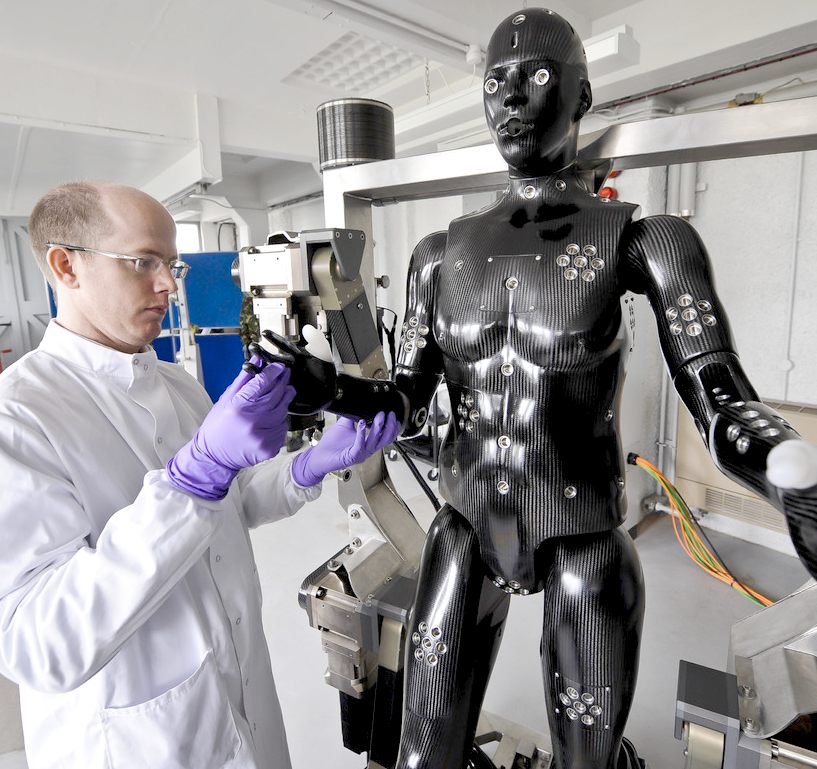
HUMAN
v INSECT - How would this (or any other current human) animatronic
fare against the JHL robot
ant on the battlefield? Not a chance. Where the DSTL are using the
Porton Man to test protective clothing for soldiers, maybe they should be
looking to replace most of those soldiers altogether to keep them 100%
safe. Put yourselves in the minds of an opposing army facing giant robot
soldiers. Would you hang about to find out how dangerous they are, knowing
that even if you disabled a few, they have no fear.
PORTON
MAN - DSTL CRASH TEST DUMMY - APRIL 2014
A new robot mannequin that will help test the next generation of chemical and biological
protective suits for the UK's armed forces has been unveiled.
The Porton Man can walk, march, run, sit, kneel and even mimic the movement of a soldier sighting a weapon, allowing scientists to test the suits designed to protect UK personnel from chemical and biological attacks such as nerve agents like Sarin.
The mannequin has been made for the Defence Science and Technology Laboratory (Dstl) in Porton Down, Wiltshire - where clothing systems worn by soldiers are tested against chemical warfare agents by Buckingham-based company
i-bodi Technology Ltd.
Mannequins have been used by Dstl in the past, but the new animatronic version has a raft of improvements from a moving head, to a better range of movement, and sensors all over its body that allow scientists to carry out real-time analysis while it is being tested.
Previous models, brought into use in the late 1990s, helped influence the final design of the chemical, biological and radiological (CBR) suits currently used by the armed forces.
Scientists today said the new creation - made using Formula 1 technology - will bring another "step-change" in the way the next generation of protective clothing is designed to keep pace with future threats.
Jaime Cummins, of Dstl's Chemical and Biological Physical Protection group, said the new Porton Man is much lighter than its predecessor - 14kg (30lb) instead of about 80kg (176lb) - and easier to move in and out of its test chamber.
While the previous version's head was attached to the frame it sits in, this one has a movable head that can test the effect it has on the equipment being worn, as well as removable thumbs to make it easier to put gloves on, and ankles that flex.
The new version also sits on a rotating turntable so it can not only be tested in windy environments created by fans, but scientists can see what happens when that wind is coming from different directions.
The latest Porton Man also comes with software that allows scientists to programme a range of movement to fit with certain scenarios, and help test what equipment would be like dealing with real situations in the field.
Cummins said: "Significant advances in animatronics, material design and sensing technologies have all been incorporated into this new Porton Man mannequin.
"As a result, we will be able to assess and characterise protective clothing in ways which were not previously possibly.
The new mannequin is hoped to help work on producing a new, lighter-weight protective suit for the future.
Cummins added: "It's a better, more realistic test system, and we are now in a better position and better place to design and develop the next generation of CB (chemical and biological) protective suit equipment."
In a £1.1 million project, the new Porton Man was made by i-bodi Technology, which has designed and made mannequins before, but draws on experience of making animatronics and robotics for films and television.
Chief executive Jez Gibson-Harris said they were tasked with producing a lightweight robotic mannequin based on data collected from 2,500 soldiers, that was easy to handle, had a wide range of movement.
He said: "Of course there were a number of challenges associated with this and one way we looked to tackle these challenges was through the use of Formula One technology.
"Using the same concepts as those used in racing cars, we were able to produce very light but highly durable carbon composite body parts for the mannequin."
He added: "We tried to make it far more realistic than the current Porton Man."
Minister for defence equipment, support and technology Philip Dunne said: "This technology, designed by a British company, is enabling the UK to lead the way in this important testing.
"Increased investment in science and technology by the MoD (Ministry of
Defence) is not only enabling battle-winning and lifesaving equipment to be developed but also helping innovative companies like i-bodi Technology to develop cutting edge capability."
i-bodi
Technology Ltd, Unit 8, Swan Business Centre, Osier Way, Buckingham, MK18 1TB.
Tel: +44 (0)1280 815300 Fax: +44 (0)1280 813010 Email: info@i-bodi.com
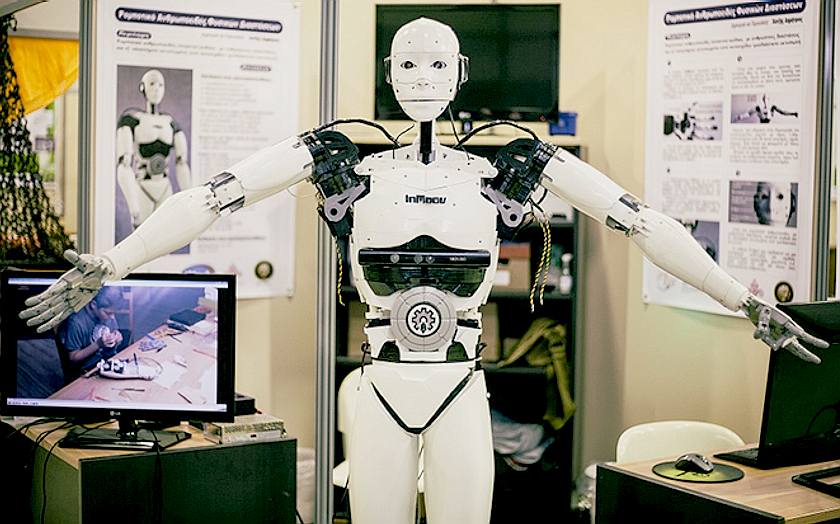
TROOPY
- Inspired by the 2011 sci-fi film Real Steel starring Hugh Jackman, Greek teenager Dimitris Hatzis has become the youngest person in the world to build a 3D printed life-size functional robot. His interest in robotics began at a very early age, but it wasn’t until late 2013, when he saw Real Steel, that he began to think of building
Troopy. His incredible creation won him the first prize at this year’s Industrial Informatics Festival i2fest, held in
Kavala. Last year, he had won the second prize for designing and building a 3D home printer from scratch.
The robot uses 2 Arduino Mega boards, 2 nervo board shields and 28 servos. The 1.85-meter (73 inches) tall droid can accurately mimic human movements. It is unclear if the robot can walk - and if so how far.
InMoov is an open source humanoid robot you can make with a 3D printer
'INMOOV'
3D
PRINTED ROBOT - SEPT 2015 - INHABIT
Fifteen-year-old Dimitris Hatzis of Greece has become the youngest person on Earth to create a functional, life-size, 3D-printed robot that looks and acts surprisingly like its human inventor. It wasn’t a weekend hobby just for kicks, though. The teen was the youngest participant in ‘InMoov’, an open source project run by French sculptor and designer Gael Langevin. Hatzis spent more than 1,400 hours over the course of a year to plan, build, and perfect “Troopy,” his 3D-printed pal.
Hatzis was reportedly inspired to build a humanoid robot by the 2011 sci-fi film Real Steel starring Hugh Jackman. The young inventor is one of only six people to successfully complete the open source robotics project, through which Langevin supplied a design that is “replicable on any home 3D printer with a 12 x 12 x 12cm area.” The ambitious teen printed 475 separate parts that consumed about a kilometer (more than half a mile) of ABS
plastic, and then pieced them together to build his life-size robot.
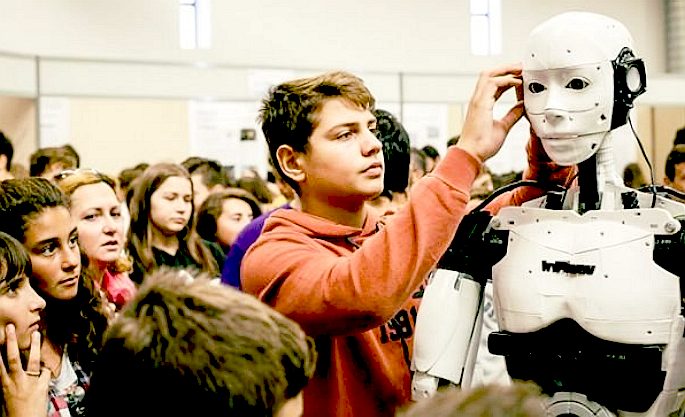
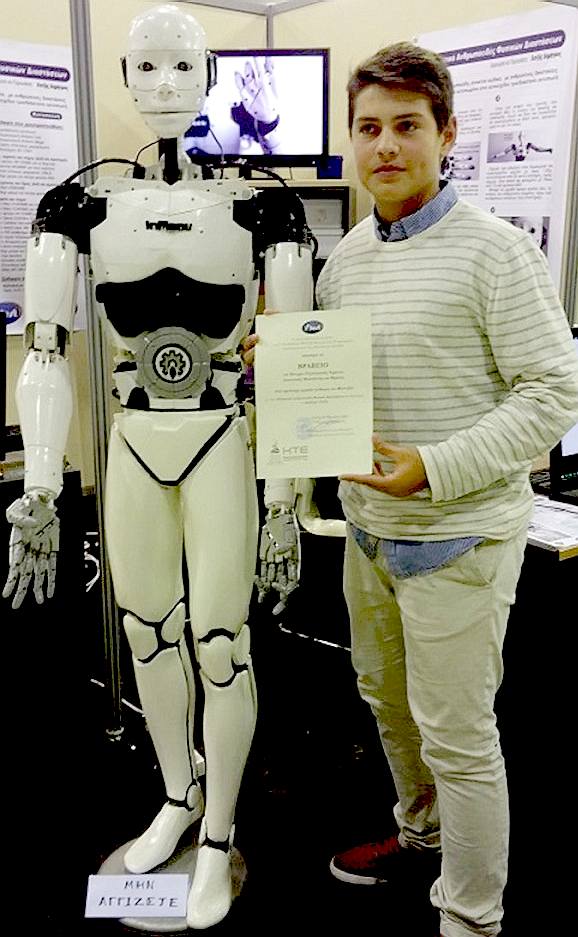
The other builders who ended up with working robot sidekicks are Langevin himself, two Russians, an Italian, and a German. The Greek teen worked alongside the others as peers, despite a big age difference.
Troopy has many impressive features you expect to see in a life-size robot. It can move its head and eyes independently, and has five degrees of freedom in each arm. Degrees of freedom (DOF) is a mechanical engineering term used to describe the variation of motion, and most humanoid robot arms have five to seven DOF. This kind of flexibility enables a humanoid robot to move more like an actual human. In addition to looking and moving similar to a human, Troopy also speaks fluent English.
No matter how cool we think Troopy is, its inventor still sees room for improvements. “Every new robot has an improved model of the previous one – this is why the robot hasn’t yet morphed into its final form and maybe never will, constantly being improved and updated,” said Hatzis.

SEXBOTS
- An “expert” on the psychology of sex has “claimed” that not only does she expect having “sex with robots” to be socially “acceptable” by 2070, but it may be more popular than “intercourse” with humans.
While the notion has “dystopian” elements, Dr. Helen Driscoll of the University of Sunderland said that any “stigma” attached to “robophilia” could quickly dissipate.
“We tend to think about issues such as virtual reality and robotic sex within the context of current norms,” she told
The Mirror.
“But if we think back to the social norms about sex that existed just 100 years ago, it is obvious that they have changed rapidly and radically.”
Such
companions might relieve often turbid sexual conditions in a relationship,
freeing up partners for a more fruitful and productive life. The impending “trend” is the subject of a lot of “fiction” being made of late, including the films “Ex Machina” and the Channel 4 TV series “Humans” which tend to “focus” on the negatives.
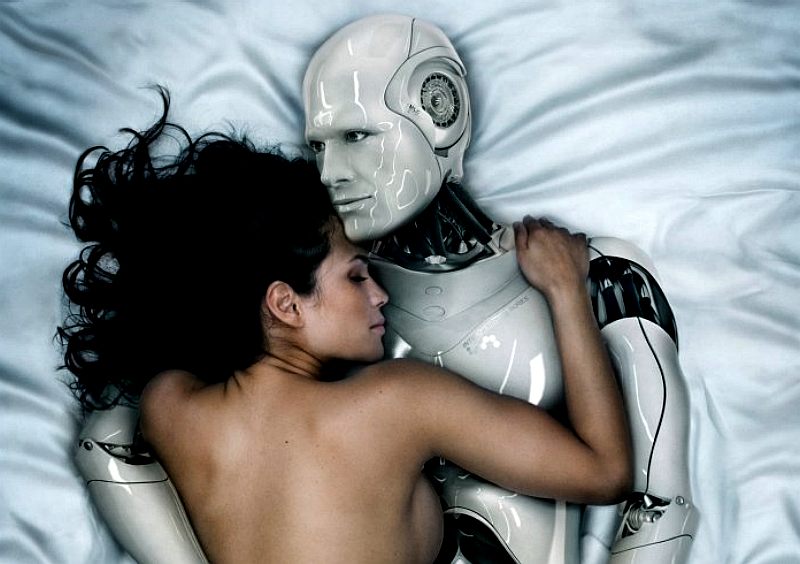
LIGHTEN
UP - When it comes down to it, machines are simply what we make them. Robots allow us to explore our issues without the restrictions of our own humanity. They are but a blank slate that offer us the opportunity to reframe our ideas. With the internet already opening up an entirely new world for people to explore their sexual identities and
politics.
The tech columns continually shout with headlines to ban sex robots much as though they are foreseeing the dawn of a threatening age of artificial intelligence akin to autonomous killer robots. Leading the campaign, academics Kathleen Richardson and Erik Billing argue that the development of sex robots must be stopped due to the reinforcement and reproduction of preexisting inequalities.
While it’s true society has plenty of issues with gender stereotyping, sexism and sexual objectification, actual opposition to developing sex robots doesn’t aim for that outright ban, does it? It’s seemingly shortsighted. Furthermore, existing research into the matter predominantly revolves on the superficial exploration of human attachment which is so popularized by films such as Her and Ex
Machina: male dominated and male gazed approaches of men and machine relationships so often without consideration of gender parity.
NEW YORK DAILY NEWS SEPT 2015
Having sex with robots is a really bad idea, according to ethicists.
As New Jersey-based True Companion gets ready to launch the world's first sex robot with artificial intelligence by the end of the year, a group of experts on Tuesday mounted a campaign with a grim warning: the bots could encourage and intensify the objectification of women and children.
“We think that the creation of such robots will contribute to detrimental relationships between men and women, adults and children, men and men and women and women,” U.K.-based ethicist and Campaign Against Sex Robot leader Kathleen Richardson told the
BBC.
At first, Richardson, who also works at De Montfort University as a robot anthropologist, thought the robots were innocuous.
“When I first started looking into the subject I thought, ‘oh sex robots. That's harmless and perhaps these robots would reduce demand for real women and children,’” She told NBC News. “But then as I researched the subject more I found that the opposite was true — that rather than reduce the objectification of women, children and also men and transgender people, these robots would contribute and reinforce their position in society (as objects).”
The robots — basically sex dolls with artificial intelligence — haven’t hit shelves yet: A company called True Companion has promised to start selling the “world’s first sex robot,” name Roxxxy, later this year. Roxxxy is set to sell for about $7,000.
Chief executive Douglas Hines said the robots are not about abuse and objectification — and not entirely about sex. Rather they offer companionship and emotionally intimacy, too, he told BBC. A robot can converse with its owner and will be able to pick up on his or her likes and dislikes.
"We are not supplanting the wife or trying to replace a girlfriend. This is a solution for people who are between relationships or someone who has lost a spouse,” he said. “The physical act of sex will only be a small part of the time you spend with a sex robot — the majority of time will be spent socializing and interacting.”
Still, the ethicists worry that the robots will become a substitute for human interaction all together.
“Introducing sex robots that could replace partners is the extreme of this trend, where we start to objectify our human relationships,” said Erik Billing, another Campaign Against Sex Robots member.
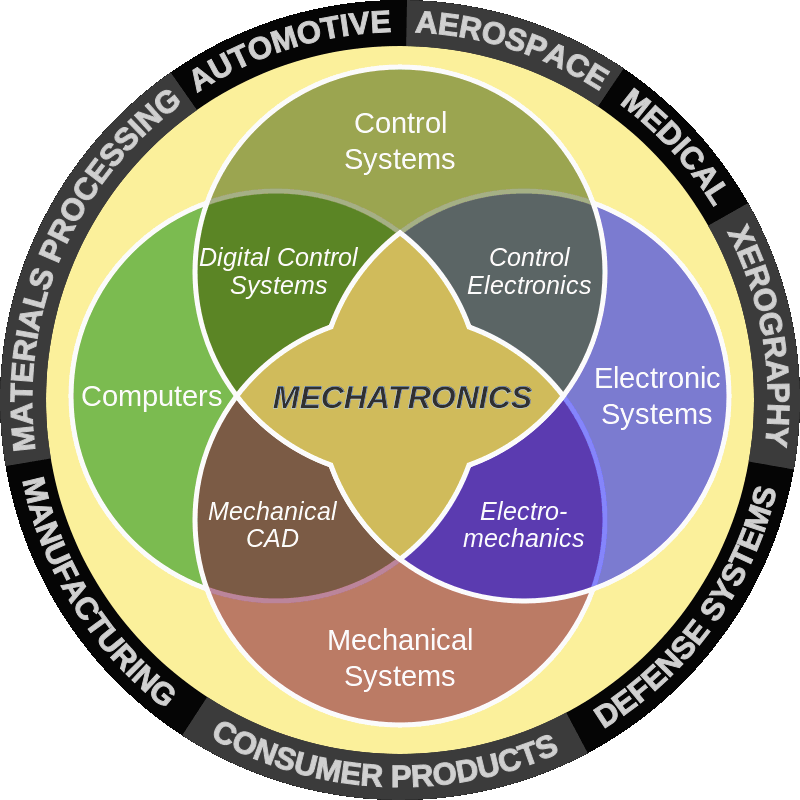
ANIMATRONICS
Animatronics refers to the use of robotic devices to emulate a human or an animal, or bring lifelike characteristics to an otherwise inanimate object. Animatronic creations include animals (including dinosaurs), plants and even mythical creatures. A robot designed to be a convincing imitation of a human is more specifically labeled as an android. Modern animatronics have found widespread applications in movie special effects and theme parks and have, since their inception, been primarily used as a spectacle of amusement.
Animatronics is a multi-disciplinary field which integrates anatomy, robots, mechatronics, and puppetry resulting in lifelike animation. Animatronic figures are often powered by pneumatics, hydraulics, or by electrical means, and can be implemented using both computer control and human control, including teleoperation. Motion actuators are often used to imitate muscle movements and create realistic motions in limbs. Figures are covered with body shells and flexible skins made of hard and soft plastic materials, and finished with details like colors, hair and feathers and other components to make the figure more realistic.
ANIMATRONICS
DESIGN
An animatronics character is built around an internal supporting frame, usually made of steel. Attached to these "bones" are the "muscles" which can be manufactured using elastic netting composed of styrene
beads. The frame provides the support for the electronics and mechanical components, as well as providing the shape for the outer skin.
The "skin" of the figure is most often made of foam rubber, silicone or urethane poured into moulds and allowed to cure. To provide further strength a piece of fabric is cut to size and embedded in the foam rubber after it is poured into the mould. Once the mould has fully cured, each piece is separated and attached to the exterior of the figure providing the appearance and texture similar to that of "skin".
Structure
An
animatronics character is typically designed to be as realistic as possible and thus, is built similarly to how it would be in real life. The framework of the figure is like the "skeleton". Joints, motors, and actuators act as the "muscles". Connecting all the electrical components together are wires, such as the "nervous system" of a real animal or person.
Frame or skeleton
Steel,
aluminum, plastic, and
wood are all commonly used in building animatronics but each has its best purpose. The relative strength as well as the weight of the material itself should be considered when determining the most appropriate material to use. The cost of the material may also be a concern.
Exterior or skin
Several materials are commonly used in the fabrication of an animatronics figure's exterior. Dependent on the particular circumstances, the best material will be used to produce the most lifelike form.
For example, "eyes" and "teeth" are commonly made completely out of acrylic.
Latex
White latex is commonly used as a general material because it has a high level of elasticity. It is also pre-vulcanized, making it easy and fast to apply. Latex is produced in several grades. Grade 74 is a popular form of latex that dries rapidly and can be applied very thick, making it ideal for developing molds.
Foam latex is a lightweight, soft form of latex which is used in masks and facial prosthetics to change a person's outward appearance, and in animatronics to create a realistic "skin". The Wizard of Oz was one of the first films to make extensive use of foam latex prosthetics in the 1930s.
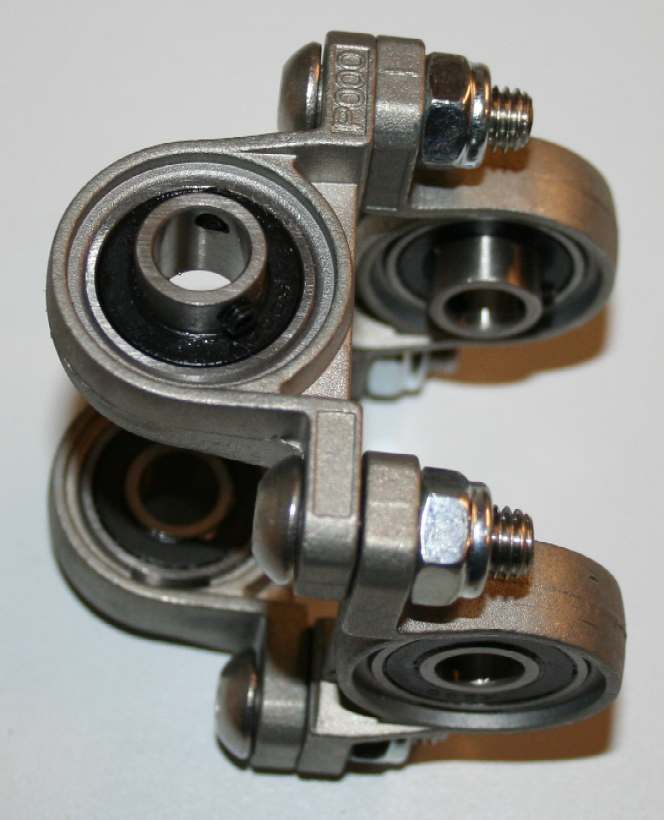
ANDROID
CHASSIS DESIGN
- The secret to building a better android, is to develop lightweight 3 and
5 axis joints. Jameson Hunter Ltd is looking to use their robot IP to
develop a humanoid frame that other robotic engineers might purchase
cheaply for open source development. The above ball-bearing based joint is
to incorporate shoulder and arm swivels to make 5 axis arm and leg
joints - to be made of titanium in 12 and 16mm shaft versions. These will
be strong enough to out-lift the world's strongest man.
Silicone
Disney has a research team devoted to improving and developing better methods of creating more lifelike animatronics exteriors with silicone.
RTV silicone (room temperature vulcanization silicone) is used primarily as a molding material as it is very easy to use but is relatively expensive. Few other materials stick to it, making molds easy to separate.
Bubbles are removed from silicone by pouring the liquid material in a thin stream or processing in a
vacuum chamber prior to use. Fumed silica is used as a bulking agent for thicker coatings of the material.
Polyurethane
Polyurethane rubber is a more cost effective material to use in place of silicone. Polyurethane comes in various levels of hardness which are measured on the Shore scale. Rigid polyurethane foam is used in prototyping because it can be milled and shaped in high density. Flexible polyurethane foam is often used in the actual building of the final animatronic figure because it is flexible and bonds well with latex.
Plaster
As a commonplace construction and home decorating material, plaster is widely available. Its rigidity limits its use in moulds, and plaster moulds are unsuitable when undercuts are present. This may make plaster far more difficult to use than softer materials like latex or silicone.
Movement
Mimicking the often subtle displays of humans and other living creatures, and the associated movement is a challenging task when developing animatronics. One of the most common emotional models is the Facial Action Coding System (FACS) developed by Ekman and Friesen. FACS defines that through facial expression, humans can recognize 6 basic emotions: anger, disgust, fear, joy, sadness, and surprise. Another theory is that of Ortony, Clore and Collins, or the OCC model which defines 22 different emotional categories.
MECHATRONICS
Mechatronics is a multidisciplinary field of engineering that includes a combination of mechanical engineering, electrical engineering, telecommunications engineering, control engineering and
computer engineering. As technology advances the subfields of engineering multiply and adapt. Mechatronics' aim is a design process that unifies these subfields. Originally, mechatronics just included the combination of mechanics and electronics, hence the word is a combination of mechanics and electronics; however, as technical systems have become more and more complex the word has been broadened to include more technical areas.
The word "mechatronics" originated in Japanese-English and was created by Tetsuro Mori, an engineer of Yaskawa Electric Corporation. The word "mechatronics" was registered as
a trade mark by the company in Japan with the registration number:
"46-32714" in 1971. However, afterward the company released the right of using the word to public, and the word "mechatronics" spread to the rest of the world. Nowadays, the word is translated in each language and the word is considered as an essential term for industry.
French standard NF E 01-010 gives the following definition: “approach aiming at the synergistic integration of mechanics, electronics, control theory, and computer science within product design and manufacturing, in order to improve and/or optimize its functionality".
Many people treat "mechatronics" as a modern buzzword synonymous with "electromechanical engineering". However, other people draw a distinction between an "electromechanical component"
- does not include a computer; an electro-mechanical computer (such as the Z4)
- does not include an electronic computer; vs. a "mechatronic system" - a computer-controlled mechanical system, including both an electronic
computer and electromechanical components.
A mechatronics engineer unites the principles of mechanics, electronics, and computing to generate a simpler, more economical and reliable system. The term "mechatronics" was coined by Tetsuro Mori, the senior engineer of the
Japanese company Yaskawa in 1969. An industrial robot is a prime example of a mechatronics system; it includes aspects of electronics, mechanics, and computing to do its day-to-day jobs.
Engineering cybernetics deals with the question of control engineering of mechatronic systems. It is used to control or regulate such a system (see control theory). Through collaboration, the mechatronic modules perform the production goals and inherit flexible and agile manufacturing properties in the production scheme. Modern production equipment consists of mechatronic modules that are integrated according to a control architecture. The most known architectures involve hierarchy, polyarchy, heterarchy, and hybrid. The methods for achieving a technical effect are described by control algorithms, which might or might not utilize formal methods in their design. Hybrid systems important to mechatronics include production systems, synergy drives, planetary exploration rovers, automotive subsystems such as anti-lock braking systems and spin-assist, and everyday equipment such as autofocus cameras, video, hard disks, and CD players.
HUMAN
LOCOMOTION
Human locomotion is typically more complex than
insect
locomotion. Humans use what are known as dynamically stable gates. When the center of mass is plotted as a human walks, it looks like an inverted pendulum motion. Potential energy at the peak is converted into kinetic energy in the next step, then the kinetic energy is recovered and converted back into potential energy again.
Even when a human is standing still they are not very stable. They are using their muscles to insure that they remain balanced on their feet. If they did not, then the slightest perturbation would knock them over and they would fall. So humans maintain stability by constantly adjusting the muscles of their body to insure that they do not fall. This is what is meant by dynamic
stability and that is why human (bipedal) robots are potentially less
efficient than robots with four or more legs, that may not need to used
energy to remain stable.

LINKS
& REFERENCE
https://en.wikipedia.org/wiki/Animatronics
Instructables
Simple Animatronics Robotic Hand
Robots
animals
Wikipedia
Mechatronics
Tested
art maker faire 2013 roy animatronic robot
Kickstarter
projects meet roy an experiment in animatronics part one
The
Guardian
world news 2015 September 28 no sex with robots says Japanese android firm
softbank
Science
burger the-ultimate-defense-for-sex-robots
Andelino
Wordpress 2015 November 8 robot sex
Inhabitat
greek teen becomes the youngest person to build a life size functional 3d
robot
oddity
central technology 15 year old becomes youngest person to create functional
life size humanoid robot
Robot
Shop mechate robot hand
https://www.greenparty.org.uk/
info@i-bodi.com
http://www.i-bodi.com/
http://www.carolinelucas.com/
https://www.gov.uk/government/organisations/ministry-of-defence
https://www.gov.uk/government/organisations/defence-science-and-technology-laboratory
http://www.robotshop.com/en/mechate-robot-hand.html
http://www.odditycentral.com/technology/15-year-old-becomes-youngest-person-to-create-functional-life-size-humanoid-robot.html
http://inhabitat.com/greek-teen-becomes-the-youngest-person-to-build-a-life-size-functional-3d-robot/
http://www.theguardian.com/world/2015/sep/28/no-sex-with-robots-says-japanese-android-firm-softbank
http://scienceburger.com/the-ultimate-defense-for-sex-robots
https://andelino.wordpress.com/2015/11/08/robot-sex/
https://www.kickstarter.com/projects/1647660643/meet-roy-an-experiment-in-animatronics-part-one
http://www.tested.com/art/makers/455620-maker-faire-2013-roy-animatronic-robot/
https://en.wikipedia.org/wiki/Mechatronics
https://en.wikipedia.org/wiki/Animatronics
http://www.instructables.com/id/Simple-Animatronics-robotic-hand/
http://www.robots.nu/robot-animals/
http://www.knbefxgroup.com/
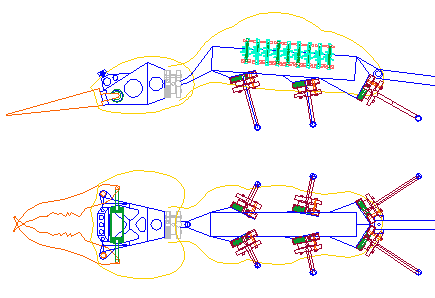
DINOSAURS
- DOLPHINS - HUMANOIDS
- RAYS
- SHARKS
- WHALES
|














